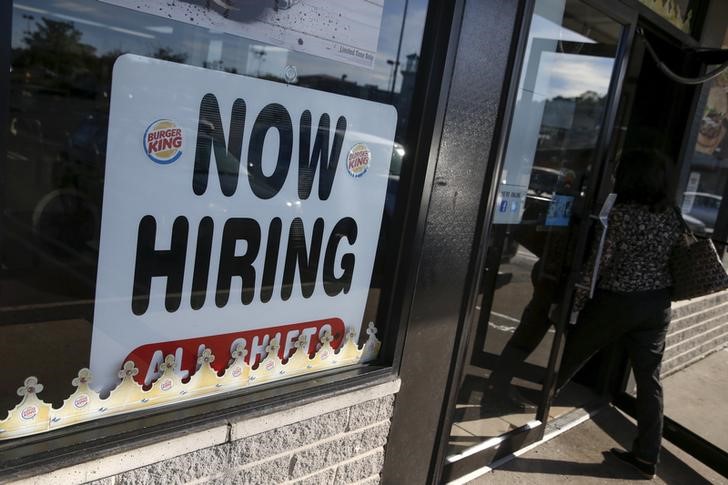This post was originally published on this site

Investing.com — U.S. stocks turned lower on Friday to start a new quarter after the release of the much anticipated monthly official jobs report.
At 1:55 PM ET, the Dow Jones Industrial Average fell 34 points, or 0.1%, while the S&P 500 was down 0.3% and the NASDAQ Composite was down 0.4%.
The main Wall Street indices closed sharply lower Thursday, with the blue-chip Dow Jones Industrial Average, the broad-based S&P 500 and the tech-heavy Nasdaq Composite all closing down more than 1.5%.
The three major averages posted their worst quarter since March 2020, with the Dow and S&P 500 declining 4.6% and 4.9% and the Nasdaq dropping more than 9%, as a hawkish Federal Reserve and soaring consumer prices raised fears of a sharp economic slowdown.
The nonfarm payrolls release for March said employers added 431,000 jobs, less than expected, amid further signs of an improvement in the labor market, providing the Federal Reserve with more leeway to be more aggressive with its tightening cycle.
Analysts expected an increase of 490,000 jobs, with the unemployment rate falling to 3.7%, suggesting the central bank can continue attempting to combat inflation without the fear of hurting the economy too severely.
In the corporate sector, the auto giants Ford (NYSE:F) and General Motors (NYSE:GM) will be in the spotlight after both companies decided to halt production at their Michigan factories.
Ford will suspend production at its Flat Rock Assembly Plant next week, where it builds the Mustang, due to the global semiconductor shortage, while GM is halting production at its Lansing Grand River Assembly, where it makes the Cadillac CT4, the Cadillac CT5, and the Chevrolet Camaro.
Meme favorite stock GameStop (NYSE:GME) will also be in focus after the video game retailer announced plans late Thursday to implement a stock split.
Oil prices stabilized after the previous session’s sharp losses on the news that the U.S. plans to release one million barrels a day for six months from its emergency reserves, starting in May. This would be the largest release ever from the U.S. Strategic Petroleum Reserve.
International Energy Agency member countries are set to meet later Friday to discuss joining in, following on from the 60 million barrels they delivered at the start of March.
By 1:55 PM ET, U.S. crude futures traded 0.9% lower at $99.36 a barrel, while the Brent contract was flat to $104.65. The two benchmarks were each headed for a weekly loss of more than 12%, the largest in two years.
Additionally, gold futures fell 1.6% to $1,917/oz.
This story was originally published at 7 AM ET and updated

